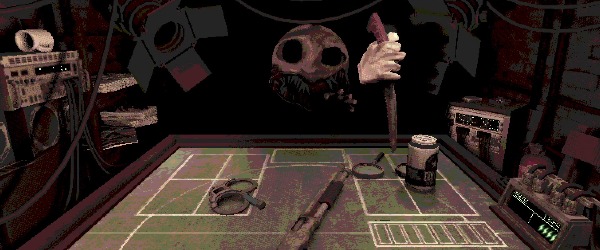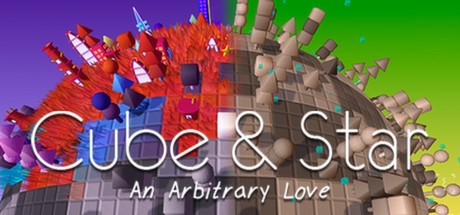
Cube & Star: An Arbitrary Love (PC) - Review
by Jared Katz , posted on 19 February 2014 / 4,439 ViewsI often wonder how indie developers come up with the concepts behind their games. Thomas Was Alone is a game about platforming shapes with a story behind it; Little Inferno is a game about purchasing and then burning items; The Floor is Jelly is a game where the floor is... well, jelly, and there are countless other imaginative concepts out there. Cube & Star: An Arbitrary Love is another game that fits into that list of odd and unique indie titles.
An apt way to describe Cube & Star is by calling it the freak love-child of De Blob, Sim City and Noby Noby Boy. You play as a cube that has the ability to color the world and bring life to its grey planet. The Cube is controlled using the arrow keys, while Z, X, C and F use your acquired powers. You gain colors by knocking into plants that cover the land. These plants will either drop a star or a block that is the same color as one of its layers. After gaining the color, you spread that color out to the ground. After a while, your color will drain, leaving you once again in a neutral, colorless state. Like the ground, when you pass near plants they will also change from grey to their own color. This process of coloring plants and gaining their color blocks when you run out of your own is key to painting the game world.
The stars that are dropped by plants are used as currency in a manner of speaking; they can be used to 'motivate' triangles that travel the planet. These triangles, after becoming motivated, turn into a specific color and then change the color of the ground and trees around them. Unlike your own Cube, these triangles never run out of color. Gradually, life begins to return to the planet as a result of your actions. Wildlife even begins to appear and these creatures also leave a trail of color as they move around.
The world of Cube & Star is full of various collectibles. The most important of these collectibles are the 'knowledge totems'. These totems give the player various powers. Three of these powers - Joy, Passion and Logic - give rise to the 'Tiny Things'. The Tiny Things are a small triangular race that have their own human-like society that raises buildings. Depending on the color of the ground, and the order in which you use these three powers, the structures and color of the Tiny Things will vary. Be warned, however; when using the power multiple times in the exact same place the game will become buggy and will slow down considerably. The final power is fire, and as the name implies it allows you to scorch the land, turning it black.
The other collectibles are Relics, Gems, Coins, Diary Entries, and tablets of ancient history of the Tiny Things. The first three have little value to the player other than bragging rights. The other two are the closet thing Cube & Star has to a story. Diary Entries tell the story of the Large Cube, who caused the planet to turn into its grey and dead state. The second is the world's history - during the same time period as the Diary Entries - from the Tiny Things' point of view.
It’s hard to describe and assess the gameplay of a game where the most you do is simply move around and, occasionally, create life. While Cube & Star isn’t action packed fun, it has its unique sense of joy and wonder, much like Noby Noby Boy. Even after playing it for four hours I still enjoy the calm, yet intriguing gameplay that consists of simply coloring the land and hitting plants. The only gripe I have with the gameplay itself is the slow movement of your cube.
Visually, Cube & Star is simple, with most of the world consisting of basic cubes, triangles and spheres. Only the structures of the Tiny Things and certain wildlife break this simplistic trend. What makes the game come to life are the colors. When you begin your journey everything seems dull and unexciting, but after a while the world becomes quite beautiful, especially at night. The brighter colors of red and teal in particular look beautiful at night because they become neon. It's also clever how, because of the curved surface of the land, trees and structures will pop-up on the horizon like a groundhog coming out of its hole. Finally, although music won't stick with you it perfectly complements the game's setting.
Cube & Star: An Arbitrary Love is priced at $10 and it takes roughly two to four hours to complete the “story”. However, this does not end the game, and you can keep on playing to your heart’s content. Those who want to start their world over again can do so with the reset button, which restarts both the world and the campaign/story. Although the campaign is short, I expect this to the kind of game that many players will come back to frequently just to enjoy the relaxing gameplay.
The rise in popularity of indie games has led to a rebirth of Western games with odd premises. Not many of these games can use their oddity to craft enjoyable gameplay experiences, but luckily Cube & Star: An Arbitrary Love manages to pull it off. While it’s not the most engaging game on the market, its unique and charming gameplay makes it hard to put down.
VGChartz Verdict
7.7
Good
This review is based on a digital copy of Cube & Star: An Arbitrary Love for the PC, provided by the publisher.


























